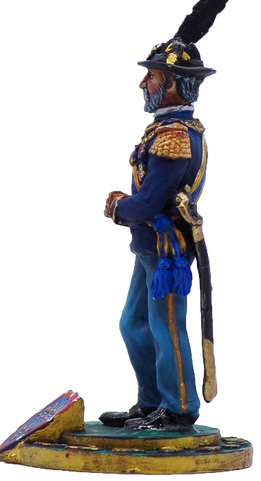
Robert I
Duke of Parma
Robert I (Italian: Roberto Carlo Luigi Maria; 9 July 1848 – 16 November 1907) was the last sovereign Duke of Parma and Piacenza from 1854 until 1859, when the duchy was annexed to Sardinia-Piedmont during the Risorgimento. He was a member of the House of Bourbon-Parma and descended from Philip, Duke of Parma, the third son of King Philip V of Spain and Queen Elisabeth Farnese. Born in Florence, Robert was the elder son of Charles III, Duke of Parma and Louise Marie Thérèse d'Artois, daughter of Charles Ferdinand, duc de Berry and granddaughter of King Charles X of France. He succeeded his father to the ducal throne in 1854 upon the latter's assassination, when he was only six, while his mother stood as regent. When Robert was eleven years old, he was deposed, as Piedmontese troops annexed other Italian states, ultimately to form the Kingdom of Italy. Despite losing his throne, Robert and his family enjoyed considerable wealth, traveling in a private train of more than a dozen cars from his castles at Schwarzau am Steinfeld near Vienna, to Villa Pianore in northwest Italy, and the magnificent Château de Chambord in France. On 5 April 1869, while in exile in Rome, he married Princess Maria Pia of Bourbon-Two Sicilies (1849–1882), daughter of King

Ferdinand II of the Two Sicilies. She was his half first cousin once removed, as her father (Ferdinand II) and Robert's maternal grandmother (Princess Caroline Ferdinande of Bourbon-Two Sicilies) were half-siblings, both being children of Francis I of the Two Sicilies. Maria Pia belonged to the deposed Royal Family of the Two Sicilies and was thus a Bourbon, like her husband. She gave birth to 12 children, many of whom had intellectual disabilities, before dying in childbirth. After his first wife's death in childbirth, he remarried on 15 October 1884 to Infanta Maria Antonia of Portugal, daughter of the deposed King Miguel I of Portugal and his wife, Adelaide of Löwenstein-Wertheim-Rosenberg. Maria Antonia was his second cousin once removed, as her paternal grandmother (Charlotte of Spain) and Robert's paternal great-grandmother (Maria Luisa of Spain) were siblings, both being children of Charles IV of Spain and Maria Luisa of Parma. She had another 12 children.

The Alpini are the Italian Army's specialist mountain infantry. Established in 1872, the Alpini are the oldest active mountain infantry in the world. Their original mission was to protect Italy's border with France and Austria-Hungary. In 1888 the Alpini deployed on their first mission abroad, in Africa, a continent to which they returned on several occasions and during various wars of the Kingdom of Italy. In 1872, Captain Giuseppe Perrucchetti published a study in the May edition of the Military Review (Italian: Rivista Militare). In the study, he proposed to assign the defence of mountain borders of the recently established Kingdom of Italy to soldiers recruited locally. Indeed, thanks to their knowledge of the surroundings and personal attachment to the area, they would be highly capable and better motivated defenders. Perrucchetti drew heavily on the work of Lieutenant General Agostino Ricci, who in 1868 had organised exercises in the mountains to assess the feasibility of a specialised mountain infantry corps. Five months after Perrucchetti's article, the first 15 Alpini companies were formed by Royal decree no. 1056, with their activation effective on October 15, 1872 - the date marked as the official Corps Day. The activation of the mountain companies thus made the Alpini the oldest active Mountain Infantry in the world.

The House of Bourbon-Parma (Italian: Casa di Borbone di Parma) is a cadet branch of the Spanish royal family, whose members once ruled as King of Etruria and as Duke of Parma and Piacenza, Guastalla, and Lucca. The House descended from the French Capetian dynasty in male line. Its name of Bourbon-Parma comes from the main name (Bourbon) and the other (Parma) from the title of Duke of Parma. The title was held by the Spanish Bourbons, as the founder Philip, Duke of Parma was the great-grandson of Ranuccio II Farnese, Duke of Parma. The Duchy of Parma was created in 1545 from that part of the Duchy of Milan south of the Po River, as a fief for Pope Paul III's illegitimate son, Pier Luigi Farnese, centered on the city of Parma. In 1556, the second Duke, Ottavio Farnese, was given the city of Piacenza, becoming thus also Duke of Piacenza, and so the state was thereafter properly known as the Duchies of Parma and Piacenza. The House of Farnese continued to rule the duchies until 1731 and the death of the last male-line duke, Antonio. Upon his death the duchy passed to Charles of Bourbon, the heir to the duchy through his mother, Elisabeth Farnese. The duchies of Parma, Piacenza and Guastalla and the Duchy of Lucca joined with the Grand Duchy of Tuscany and the Duchy of Modena to form the United Provinces of Central Italy
in December 1859, and were annexed to the Kingdom of Sardinia in March 1860. The House of Bourbon continues to claim the title of Duke of Parma to this day.
Awards: Collar and star of the Sacred Military Constantinian Order of Saint George, Insignia of the Distinguished Order of the Golden Fleece, Sash and star of the Order of Merit under the title of San Lodovico.






